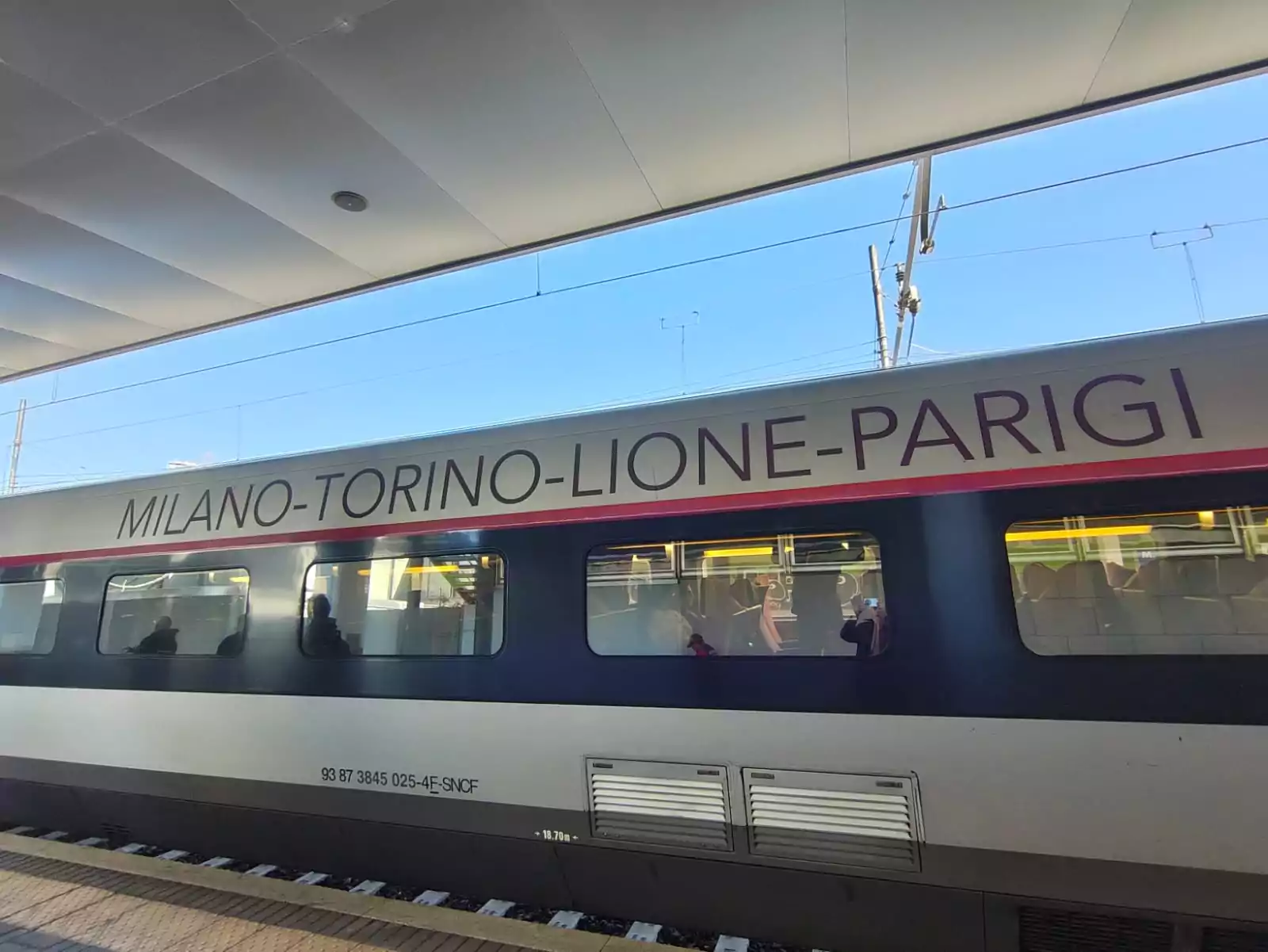Table of contents
The train is the vehicle of the moment, the train is experiencing a springtime of promises, the train is presenting itself as the figurehead of public transport in Europe, and has been the protagonist of a string of announcements in recent weeks that have been chasing each other on the tracks of half a continent.
Let’s start with the big comeback: the Milan-Paris. Between the last day of March and the first day of April 2025, the French and Italian railway companies announced the reopening of the route that was closed in August 2023 due to a landslide that disrupted the line.
SNCF and Trenitalia presented the renewed service departing from Milano Garibaldi for the French convoy and from Milano Centrale for the Italian one, which takes around seven hours to reach the Ville Lumière in all comfort, without the hassle of luggage, security checks and at launch costs that are very competitive compared to those of aeroplanes, and without mentioning the environmental impact footprint that leans decidedly in favour of rail.
Infrastructure
The restoration of the Milan-Turin-Lyon-Paris line is the first step in an infrastructural effort concerning railway lines, which includes the construction of the new passage between Turin and Lyon, which will make the transalpine link even faster, the construction of the new Brenner tunnel intended to give new impetus to the line between Verona and Munich, which passes through Trento, Bolzano, Innsbruck and then connects to the northern European railway network on the one hand and to the routes to Milan and Turin and to Bologna, Florence, Rome and Naples on the other. And then there is the third railway crossing between Milan and Genoa, the completion of which is rather close in time and which will make train travel on the route much faster and more frequent for both people and goods, thus also supporting the line connecting northern Italy with southern France and towards Spain and also giving new strength to the port of the Ligurian capital. Other strategic works for the national railway infrastructure are the high-speed line between Naples and Bari, a two-hour journey, and the new, underground, ultra-modern Florence Belfiore station, which will reduce the journey time of HS trains between Milan and Rome to well under the current three hours. And there is also technological innovation such as Italy’s first hydrogen-powered train called H2ise0, which runs on the Brescia-Iseo-Edolo route, has been operational since the beginning of the year and is built and managed by Trenord with FNM and Ferrovienord.
Design and urban impact
The train is speed, it is reduction of environmental impact, it is convenience, it is the ability to arrive in and depart from the centre of cities, but it is also charm, again in recent weeks there have been a couple of events that have brought pieces of railway history to light: the new extra-luxury tourist service of the‘Orient Express’ called La dolce vita which will travel on eight different routes along the Peninsula to bring travellers to experience the train as an experience and not just as a mere means of transport, an experience that allows the concept of luxury rail transport to be fully experienced and linked to the territories it passes through, and then the great return of the train Harlequin, a masterpiece of innovation and design from the pencil of Gio Ponti and Giulio Minoletti at a time when the fascination with railways explored new forms. The Harlequin, known as ETR 252, is back in operation and was chosen by Prada for its display during Milan Design Week, bringing the reverberations of the off-site event even under the vaults of the Stazione Centrale.
The train is social impact, it is enhancement of the territory including urban areas, just think of the impact that stations have in the contexts of the neighbourhoods in which they are located, in Milan alone, for example, there are 24 stations that bring economy, flows of people and contribute to giving new life and value to areas that were once peripheral and neglected.
The European Network
The train runs into the future and already Trenitalia announced its intention to go as far as LondonOn the Paris-Milan axis, another announcement in recent weeks, less rail and more related to public transport, has seen ATM, the company that manages the Milan area’s metro, tram and bus network, win the tender to manage a number of bus lines in the French capital, an activity that adds to the already consolidated international activities that see ATM manage the Copenhagen and Thessaloniki metro lines.
Looking a little further into the future is the Starline project. This is an ideal project, a sort of guideline for the future of rail transport in Europe, a network of connections conceived as an underground to all the continent’s major cities. The imagined lines range from Helsinki to Berlin, Liverpool to Kyiv, Athens, Lisbon, Naples to Berlin, Oslo-Milan, Madrid-Istanbul. Milan and Berlin the main nodes with Paris, Zurich, Munich, Vienna, Frankfurt, Warsaw, Lyon, Madrid, Kyiv hosting the other junctions between the lines. A fascinating project that would revolutionise the very concept of Europe, a concept that is already taking shape today with pan-European trains running at night , trains that used to be considered as the low-cost alternative for travel and that today have returned to play a leading role, modern, comfortable accompanied by services, international, and already an integral part of the timetables of Trenitalia, SNCF, the Austrian ÖBB railways, the German DB, the Swiss SBB CFF SBB, the Spanish Renfe, the Dutch, Belgian, Swedish SJ, have names like European Sleeper, Euronight, Nightjet, Bosphorus Express, Night Riviera, they travel in the dark to take us comfortably to the bright locations of the continent.
ALL RIGHTS RESERVED ©
